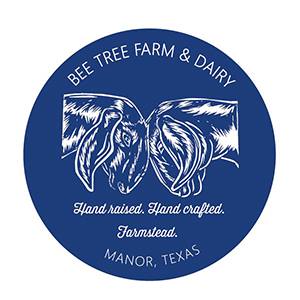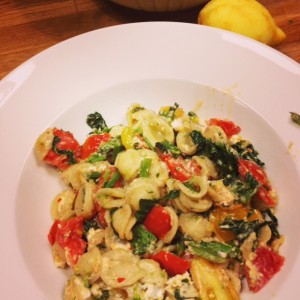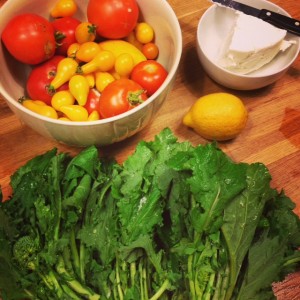Honeymoon Pasta
Months after we were married, Jer and I took a summer honeymoon trip to Italy. The plan was to start in Rome and make our way south along the western coast, spending a week in Positano, just south of Naples. We both salivated at the notion of seeing the actual Coliseum, walking the streets of Caesar and Anthony and Romulus. And, I’m not gonna lie, all of that was amazing. It’s one thing to whisper through the halls of a museum, surveying artifacts through a layer of glass protection, but Rome – and really most of Italy – is a living museum. Ancient ruins jut out in the midst of modern buildings and busy scooters buzz through cramped and crooked cobblestones. The current era rudely inserts itself into a 2,000 year old city, the remnants of which still tower alongside advertisements for McDonald’s. It’s an odd intermingling of epochs. Anyway, I mostly cared about the food. I mean, it was Italy, the cradle from which most amazing food springs. In Rome I expected my head to explode repeatedly from the abundance of delicious pastas and pizzas, followed by perfectly velvet red wines from Florentine hillsides. There was a little of that, although the gelato was most notable and worth folding into each meal there if/when you ever make the journey.
I suspected that an Italian honeymoon would haunt me with black and white memories – like Roman Holiday – filled with grand plazas and scooter rides around ornate fountains spitting water from cherubs mouths. But when I think of that lovely vacation I hardly remember Rome at all. Instead, I think of three items with such distinct clarity that they’re conjured in my hand, and the smells hover so close I get hungry – they are: lemons (by proxy – limoncello), rapini, and fontina cheese. That’s it. If I hear “Italy” or we talk about eating at an Italian restaurant and when the new Pope was elected this spring, everything for me is pushed aside by memories of these foods.
The second leg of the trip sent us down to the Amalfi coast. It’s a rough trip. You have to switch trains through some seedy stops where pickpocket warnings are posted every ten feet. The last train ends in Sorrento near Pompeii; an entire city that was caught in the ash of a volcano, full bodies trapped in the motion of running, centuries later. The final leg of the trip is a bus ride considered among the scariest roads to travel – I’m serious, look it up. The cliffs drop sheer into aquamarine Mediterranean water and spikes of black rock spit up out of the angry surf pounding against the edge of the road that curves in switchbacks so the bus teeters precariously. Crown of thorn cactus grow like weeds from the mountains and Roman outposts still sit sentry at every peak. In this stark place, the backdrop of so many deliciously scandalous tales, a corner of the world so pristine, so primitive and virile it birthed the Odyssian sirens – considered among the most seductive enchantresses of all time – this place is where I finally understood that unadulterated food can be ambrosia. At least that’s how I remember it. See how I get misty and romantic just thinking about southern Italy? It didn’t hurt that our hotel’s balcony, lined with blood-red geraniums, faced directly onto the ocean with a view so clear I discerned the African coast (maybe not – but you never know).
By pure, dumb luck we stumbled upon a small grocery store somewhat hidden from the usual tourist destinations. The place was patronized strictly by locals, and I sensed a few stink-eyes from other customers as I edged my way to the deli counter, eyeing piles of food unlike much of what I’d seen on restaurant menus. Here was the real Italian food I hoped for. Trays of olives from hillsides just down the road, small fish pulled from the harbor that morning, pickled lemon piled in crystalline jumbles – slivers of sunshine soaked in brine and sprinkled with herbs. In terrible Italian I ordered just four items. I was handed carefully wrapped packages and tucked them alongside bread and beverages. I sniffed the packages all along my quick walk back to our balcony, skipping across the cobblestones – I could not wait to eat. Once “home” I unwrapped them: a soft slab of fontina, starting to melt along its edges in its journey outside under a very hot Italian sun, a link of sausage made at the deli, bits of bright red pepper flecks visible alongside fennel seed, and finally – the rapini – wilted to perfection, tossed in an olive oil and lemon sauce, smothered in pepper flakes. We poured chilled limoncello into tiny glasses, peeled back the skins of lemons the size of grapefruits but sweet as peaches. We ate with our hands on the balcony; juices ran down our arms, the kind of thing you don’t notice or mind in the midst of a Mediterranean breeze, geranium petals tumbling at our feet. Was it Italy itself or can some foods actually be this delectable? The nutty flavor and creamy yield of the fontina was like nothing I can replicate here, even after buying fontina made in that region of Italy since I’ve returned. Do you have to eat food in a certain setting for it to taste just this sweet? I don’t think so. But it helps.
So – sadly – I can’t recreate that meal. I can’t grow true Italian rapini or serve it up on a Positano balcony. It’s possible all this comes from a tinge of nostalgia for a time when we could travel (I hate traveling), and be free of commitments like goat milking (I love milking goats), untethered to this place (I’m nothing without the farm). But it’s good to have strong memories whether derived from food or something other. Here’s my feeble attempt at re-creating that moment. It’s a Texas style Honeymoon Pasta. Not the same, very delicious, and only worth preparing with fresh ingredients while drinking a great Italian wine.
Honeymoon Pasta
What
-1 pound pasta like orecchiette – only because it means “little ear” which is sort of adorable
-2 bunches of rapini, washed, stems trimmed at base, and coarsely chopped (The whole thing! The bitter leaves are the best part.)
-The zest of 1 whole lemon
-Great tomatoes – chopped. How many? How many do you have? 2 large tomatoes or 2 big handfuls of cherry tomatoes
-2 cloves garlic pressed
-3-4 tablespoons of olive oil
-2 big pinches of red pepper flakes
-Approximately 1 cup of chevre (Why chevre and not fontina? Because I live on a farm where I always, always have chevre and never, never have fontina. Also, it makes a wonderfully creamy sauce.)
-Parmesan for grating
-salt and pepper to taste
How
Start making pasta. As soon as the water boils and the pasta begins to cook, start work on the rest of the meal. In a large and deep skillet, heat the oil. Once oil is hot, add the pressed garlic, red pepper flakes, and a few good grinds of sea salt and black pepper. As soon as the garlic becomes fragrant, add the rapini and turn the burner to low, covering the pot with a lid so it can steam. Stir frequently so it becomes well-coated and doesn’t burn. As soon as the rapini is tender to your liking, toss in the tomato and lemon zest and stir so they are just warmed and the sugars in the tomato release slightly. Drain the pasta and immediately add the chevre to the pasta, stirring frequently so it melts. Once the pasta is well-coated with the chevre, add the rapini and tomatoes. Grate parmesan onto individual servings of pasta. Clink glasses, imagine an Italian breeze, and be grateful for simple food and la dolce vita.


